Must-See Ancient Ruins in Antalya: 10 Historic Sites to Explore
Located at the meeting point of the ancient Lycia, Pamphylia, Pisidia and Cilicia regions, Antalya is almost like an open-air museum of ancient cities. Although it is mostly known as a sea tourism destination worldwide, this unique city manages to fascinate its visitors with its historical texture. While on holiday in Antalya, which blends the green of the Taurus Mountains with the deep blue waters of the Mediterranean and the warm yellow of the sun, it is possible to encounter ancient settlements that whisper thousands of years of history at every corner. We have compiled 10 of these fascinating ancient cities spread all over Antalya that you must see. So, what are the ancient cities in Antalya? Let's go exploring together.
1. Perge Ancient City
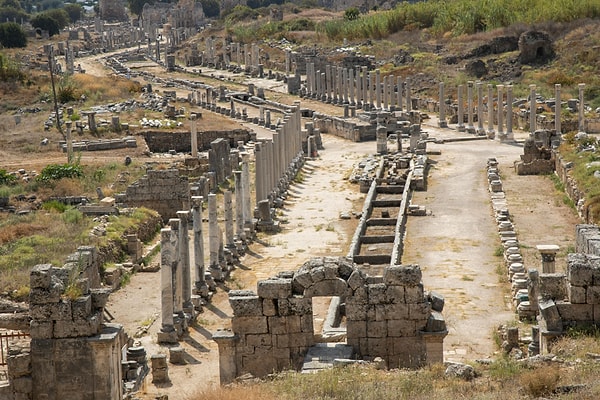
Perge, whose origin dates back to the Hittites and is thought to have been called Parha at that time, became one of the most favourite cities of the ancient Pamphylia region. Perge, which exhibited an example of perfect city planning during the Roman Empire, stands out with its architectural splendour and world-famous sculptors. With its impressive 15,000-seat theatre, 12,000-seat stadium and many magnificent buildings that have survived, Perge is a real treasure for history lovers. Do not forget to visit the Antalya Museum to see the unique sculptures in this ancient city, which is also considered sacred in the history of Christianity.
2. Side Ancient City
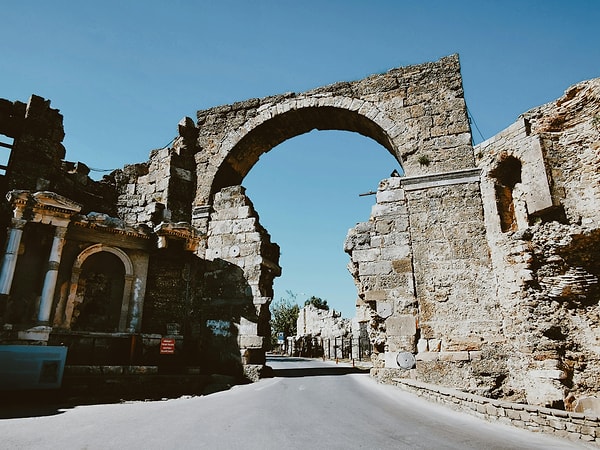
Side Ancient City, built on a peninsula, is one of the most important harbour cities of ancient Pamphylia. Side, which opened its doors to Alexander the Great during his Anatolian campaign, later became an important coin minting centre. The city, which is thought to have been a centre of education and culture in the 2nd century BC, became the target of Mediterranean pirates in time. With its monumental gates, wide avenues, theatre, temples and ruins of shops that have survived to the present day, Side is a unique destination for those who want to breathe the harbour air of ancient times.
3. Aspendos Ancient City
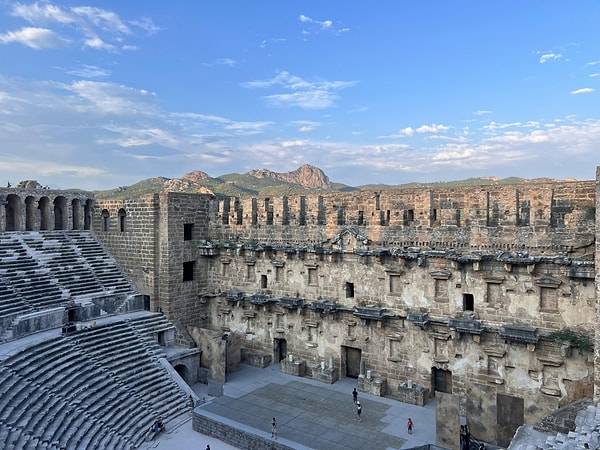
Aspendos, home to the best preserved theatre of the Roman period in the Mediterranean geography, was established close to the fertile lands of Köprüçay, whose ancient name was Eurymedon. The 20,000-seat amphitheatre, whose fame has almost surpassed its own name and was built during the reign of Roman Emperor Marcus Aurelius, reveals the understanding of architecture and engineering of the period. Dedicated to gods and emperors, this theatre is the most remarkable structure of Aspendos. In addition, the arched water bridge, which is about 1 kilometre long, pressure towers and pear-shaped water cisterns are worth seeing for those interested in ancient engineering. You can also explore the ruins of the agora, basilica, monumental fountain, parliament building, triumphal arch, monumental street and Hellenistic temple.
4. Xanthos Ancient City
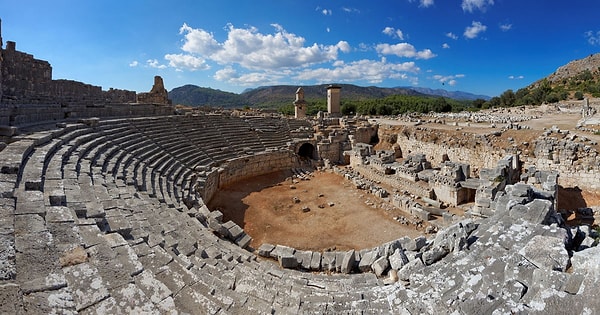
Xanthos, built on two hills overlooking the fertile plain of the Esen Stream, the ancient Xanthos River, stands out as the political centre of the Lycian Union. The epic resistance and honourable stance of the Xanthosians, known for their fondness for their freedom, during the Persian siege in the 6th century BC, have been told throughout history. Some of the ruins of Xanthos, where there are many original structures belonging to the Lycian civilisation, are exhibited in the British Museum today. The inscription on the 5th-century BC monumental tomb in the city's agora is the longest Lycian inscription discovered so far. Xanthos, mentioned by the famous poet Homer in his works as the city that sent soldiers to the Trojan War, promises a unique time travel to its visitors.
Source: Antalya Tourist Information
5. Patara Ancient City
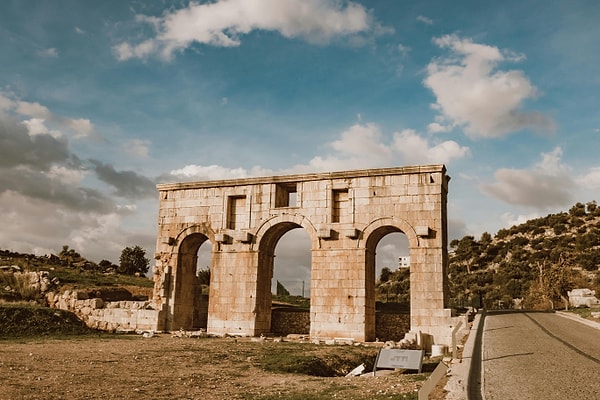
The name of Patara, one of the most ancient and important cities of Lycia, is mentioned as Patar in Hittite texts. Archaeological findings show that the settlement in the region dates back to before the Iron Age. Patara, the gateway of the Xanthos Valley to the sea, was an important port city and one of the Apollo divination centres in ancient times. It is also known as the city where the world-renowned St Nicholas (Santa Claus) lived. Patara welcomes its visitors with a magnificent Roman Triumphal Arch and offers a fascinating historical experience with its theatre, Vespasian Bath, granary, Corinthian Temple and the ruins of the Lycian Union Assembly Building. Moreover, the famous Patara Beach, which is the home of Caretta-Carettas with its 12 kilometres of sandy beach, awaits you.
6. Termessos Ancient City
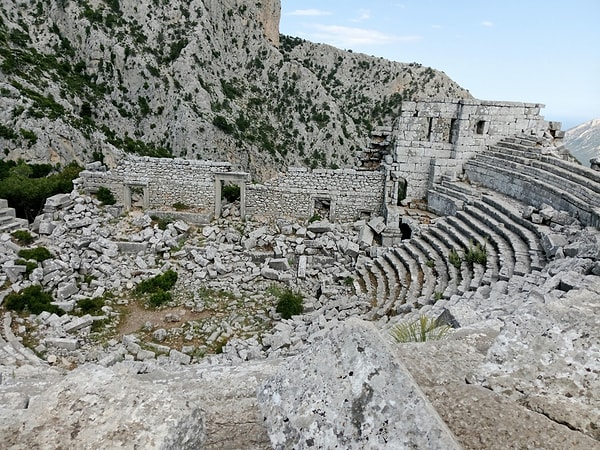
Termessos, located on the southern slopes of the Taurus Mountains at an altitude of 1050 metres at the foot of Güllük Mountain, is a fascinating ancient city with its natural structure and historical texture. Termessos, one of the most remarkable settlements of the Pisidian region, has successfully resisted many attacks in history thanks to its strategic location. This city, which even Alexander the Great had difficulty besieging, was a semi-independent community governed by its own laws. With its theatre with a unique view, agora, cemetery, gymnasium and rock tombs, Termessos is a hidden paradise for those who want to make both a nature walk and a historical journey.
7. Phaselis Ancient City
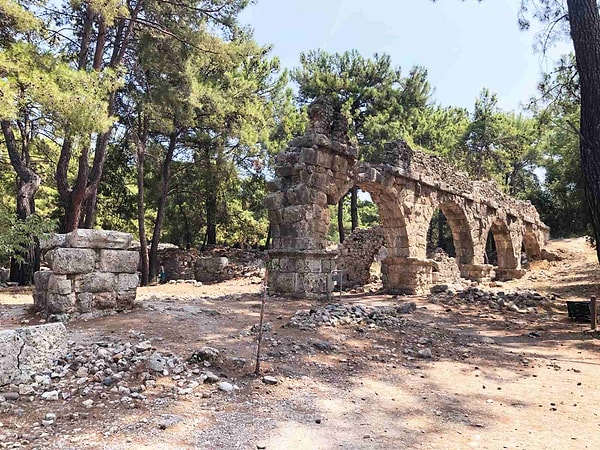
Phaselis, one of the most important harbour cities of the ancient Lycian region, has become prominent in shipping with its three natural harbours opening to the cool waters of the Mediterranean. Founded by the Rhodians in the 7th century BC, the city enriched and gained cultural diversity thanks to the port trade. The ruins of the ancient harbour, agora, aqueducts, baths and theatre can be seen today in Phaselis, which showed great development during the Roman period. Surrounded by pine forests and located on the seafront, this city offers visitors a perfect harmony of history and nature.
Source: Geziorum
8. Olympos Ancient City
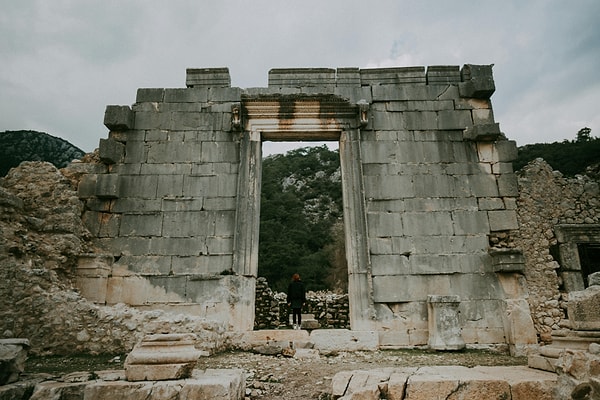
Olympos, one of the most mysterious cities of Lycia, takes its name from the nearby Tahtalı Mountain. Founded in the 2nd century BC, this ancient city has an important place in history both as a harbour city and as a refuge for pirates. Olympos was reorganised during the Roman period and became a member of the Lycian Union. Today, Roman tombs, basilicas, baths and theatre ruins can be seen on the banks of the river passing through the city. In addition, the natural gas source Yanartaş (Chimaera), which is still burning, adds a mythological atmosphere to the region. Olympos offers an unforgettable route for both history buffs and nature lovers.
9. Myra Ancient City
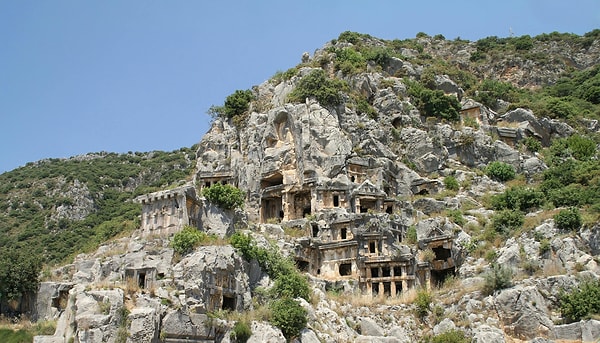
Myra, one of the important religious and administrative centres of the Lycian civilisation, is especially known for its rock tombs and impressive Roman theatre. Located in the Demre district, the city attracts attention with its history dating back to the 5th century BC. The monumental tombs and wall decorations carved into high rocks are one of the most beautiful examples of Lycian architecture. The large theatre of the Roman period is very well preserved. Myra also has an important place in the history of Christianity, as it is the place where St Nicholas, known as Santa Claus, was bishop. St Nicholas Church, located right next to the city, is also one of the frequent destinations for visitors.
10. Ariassos Ancient City
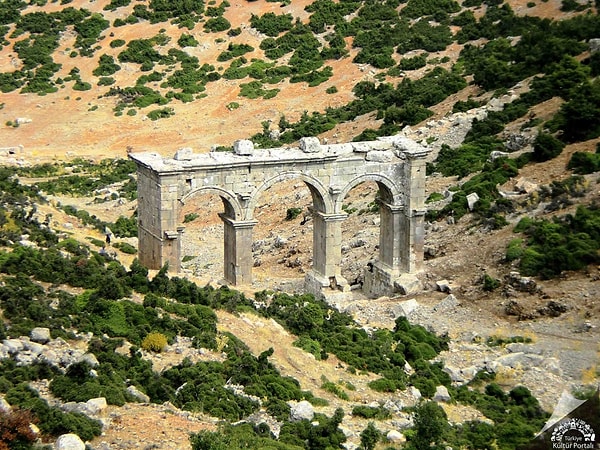
Located northwest of Antalya, near the Döşemealtı district, Ariassos is a remarkable ancient city built in the mountainous area of the Pisidian region. Settled in a rocky valley, the city stands out with its advantageous position in terms of defence. The most impressive structure of the city is the monumental entrance gate with three arches still standing. In addition, the necropolis (cemetery) area, baths, agora, housing ruins and Roman waterways can also be seen. Ariassos is a gem waiting to be discovered for those who want to explore history in a calm atmosphere away from the crowds of tourists.
Source: Antalya İl Kültür ve Turizm Müdürlüğü
Keşfet ile ziyaret ettiğin tüm kategorileri tek akışta gör!

Send Comment